Imagine being promised a test in a current, competitive Formula 1 car by a top team even before your first car race.
Exactly that happened to Vitantonio Liuzzi in 2001 after the Italian won the world karting championship – in the process beating reigning F1 champion Michael Schumacher, who stepped into a kart for a round at his home track in Kerpen in an attempt to add the CIK title to his CV.“My first F1 test was in 2002, after winning the karting world championship in 2001,” Liuzzi recalls, speaking to RaceFans from the beach club he and wife Francesca run near his native Pescara. “It was the Williams of Juan Pablo Montoya and Ralf Schumacher; it was an incredible car with nearly 1,000 horsepower.”
How did such a remarkable opportunity come about?
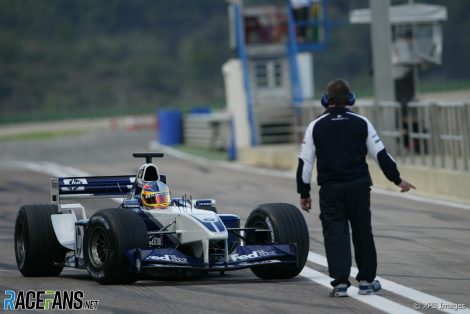
Obviously the experience was mind-blowing for the then-22-year-old, but not having any reference points made it simply “incredible, it was incredible!”. Formula Renault and the German Formula 3 championships followed, before a Red Bull contract eased his way into Formula 3000 with Arden – then run by Christian Horner – promptly winning the 2004 title.
At the time speculation linked him to Sauber – via Ferrari support – and he signed a pre-contract as team mate to Felipe Massa. But Bernie Ecclestone steered Jacques Villeneuve towards the Swiss team as the only world champion apart from Schumacher was without a drive.
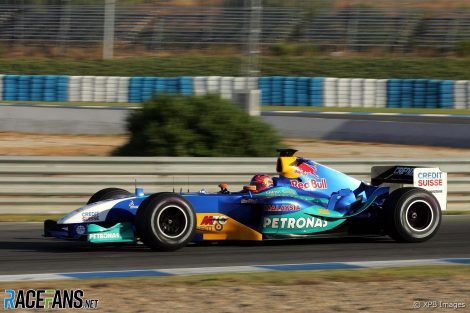
He puts it down to “the sliding doors of life”, then bounces back with, “anyway, I’m really happy with what happened [next], with Red Bull. I have to be grateful to them for my [F1] career.
“Basically the first year of Red Bull was 2005, there was a test in Jerez [at the end of 2004]. The car was basically a [Cosworth R5] Jaguar painted from green to blue and grey, like a Red Bull can.”
Advert | Become a RaceFans supporter and
This gave him a chance to compare two V10-powered cars.
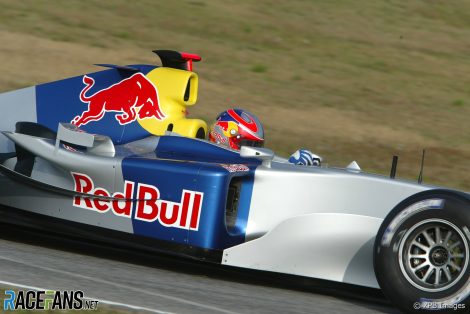
Liuzzi got the Red Bull gig, but the car, save for the livery, was effectively a little-changed Jaguar R5B renamed to RB1. The deal was, he recalls with a lopsided grin, “crazy”, not least because the team had signed three drivers for two seats: David Coulthard (whose experiences with the RB1 were previously related here), the historically Red Bull-backed 2004 Jaguar driver Christian Klien and the rookie.
“Christian was coming with two years’ experience in and I was a rookie, so the team tried to make both of us happy, swapping seats every four races,” says the now-40-year-old.
He drew the second cycle – qualifying within 0.2 seconds of DC and lapping ahead of him to claim a point for eighth in his first grand prix. But by the time his second shot arrived he and Klien reached agreement that the concept did neither any favours and they persuaded the team to drop the arrangement.
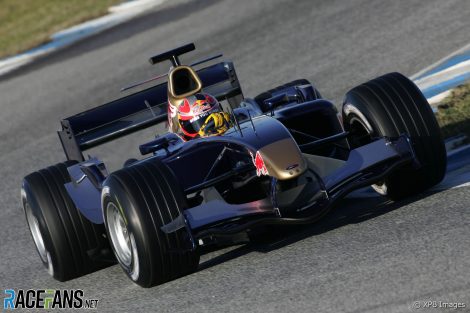
Toro Rosso inherited the R5B/RB1 chassis. Teams were required to swap their V10 engines for V8s in 2006 but Toro Rosso were granted a concession to race with rev-limited and air-restricted 2005-spec Cosworth V10s – effectively the same base engine as previously used by Jaguar. Thus, the car was effectively an ageing, under-powered Jaguar with aerodynamic updates to wings and floor.
However, Liuzzi recalls a car that occasionally had “even a little advantage of engine torque [due to the V10] and we were pretty competitive at Monaco and Indianapolis, where our pace was pretty good.
“We scored two points during the season, so it was still a nice car, not as balanced or enjoyable to drive as a Williams or Sauber, but as a rookie it was always a massive adrenaline [rush] and you always fight and work harder to develop the car. That was my biggest quality.”
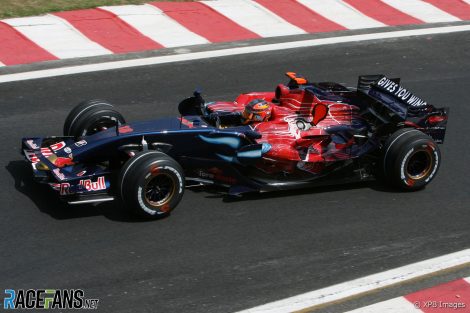
“It was basically the 2006 Red Bull fitted with the Ferrari engine,” Liuzzi recalls. “Sometimes we were going even faster than the Red Bull, because the Ferrari engine was stronger than their Renault.”
His team-mate for the final seven 2007 rounds was Vettel, then a rookie with a single race with BMW under his belt.
“He was really good in obtaining what he had in his mind and putting the team together [around him],” Liuzzi says. “He was also really good at the being in the right place at the right time. These are all part of the strength of a driver.
“You don’t have only to be fast; this is luckily something I never lacked in terms of pure speed, but Sebastian was a machine of preparation, a machine of working in partnership with the team, and that’s why I think he fully deserved what he won.”
For 2008, Liuzzi joined Force India under a two-year contract as test driver, with a promise of a race seat thereafter. That materialised slightly earlier after the team released Giancarlo Fisichella to go to Ferrari in September 2009.
For the first year the technical director was James Key, now of McLaren, replaced by Andrew Green, who still holds that position with the team that mutated to Aston Martin via Racing Point.
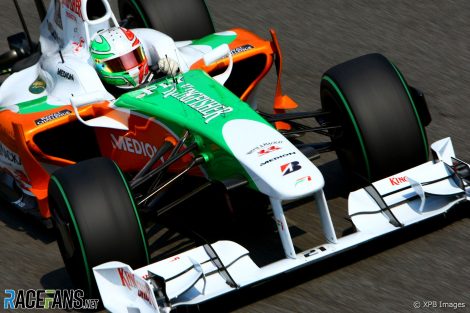
“Force India was an amazing group of people working together already for many years. Even if we didn’t have much budget as a team – it was Vijay (Mallya) obviously putting in the money, but he was always Vijay… so it was late payments and all the things that we are used to.
“It was not easy to raise budgets and the team made big efforts. The people [then] working for Force India, maybe 80% are still there now as Aston Martin. They work really hard, and they are very good technicians. That was a really good environment to compete.”
Advert | Become a RaceFans supporter and
The end of 2009 saw Force India switch from Ferrari engines to using complete McLaren back-ends including Mercedes engines. Liuzzi is therefore able to draw direct comparisons between the two, plus had two years’ experience of Red Bull/Toro Rosso Ferrari-powered chassis.
“There were some rule changes [for 2009], they were quite different in terms of aerodynamics, the bodywork was quite different to look at. In terms of engines they were two different products. If I compare Ferrari and Mercedes, there was a completely different attitude.
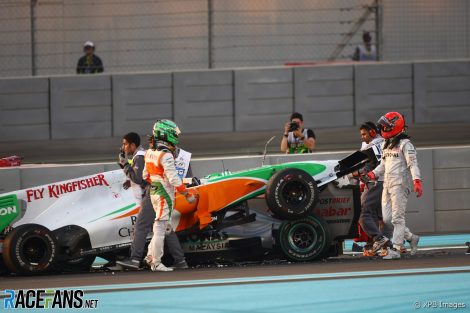
“I used to love to be part of development, I used to go to the wind tunnel many times because I enjoyed to see why the car is going faster or better. It was also something that helped me to support the team in development because I was definitely part of the process.
“If I look now at, for example, the steering wheel that Aston Martin is using it is still the design I designed together with the engineers. I did all the grips and the positions of the paddles and switches, and it makes me feel appreciated to form part of the team. I loved it.”
Yet, despite (at least) matching team mate Adrian Sutil regularly and having a year to run on his contract he was dropped at the end of 2010 in favour of Paul di Resta. Why so?
Liuzzi puts it down to McLaren being eager to accommodate the Mercedes DTM driver and F1 tester, offering a discount on KERS units and gearboxes. In addition, di Resta was managed by Anthony Hamilton, father of Lewis, and thus held sway at McLaren. There was, however, another factor.
“Bob Fernley was there since the beginning [of Mallya’s acquisition] and was really a good mate of Vijay,” Liuzzi says of the de facto team boss. “He was basically the right hand, left hand, eye and brain for Vijay at the race track and for the race team.
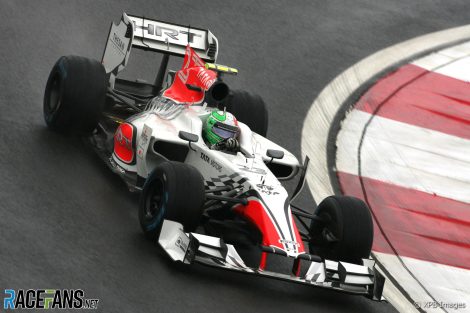
Then, without a trace of bitterness, Liuzzi says, “It’s part of the game, we saw it happen many times, and it’s just a shame I was always at the right place at the wrong moment.”
His next, and final, F1 stop was HRT – run by Colin Kolles, his German F3 team boss – after talks with Eric Boullier for a seat at Lotus broke down when Romain Grosjean’s budget from Total proved decisive.
“There was not huge money in the team but there was a possibility for me to stay in the business, to show my speed and potential, and to be always ready. Everything was going fine and I signed a three-year deal with Mr Kolles and [team owner] Mr Carabante to race with HRT because it was another interesting development project.
“It was a package without money but a package with interesting people in the team such [ex-Williams and BAR designer] Geoff Willis. It was working well and [Kolles] for me was always really straight that’s why we started with this project. Then Carabante stepped out as head of HRT and in came [Thiessen Capital], a Spanish company. It was driven by politics, and they were spending money in a strange way.”
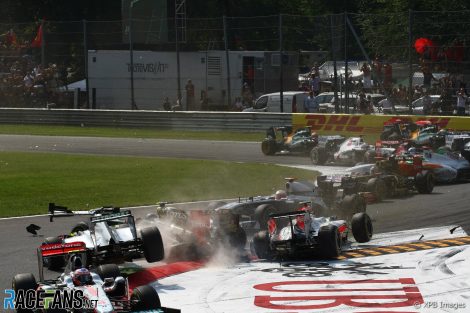
“I still have my good relationship with Marko and ended up having good relations with Daniel, he has always been a good mate and he deserves what he achieved so far because he showed strong performance from the beginning.”
For the record, Liuzzi’s season with the ancient, Cosworth-powered HRT was an not unexpected disaster due having zero development budget – he reckons they used the same chassis design for four straight years and at times went up to six races without a single change to the car – but Liuzzi looks back on 2011 with satisfaction after out-qualifying future star Ricciardo more often than not during their 11 races together.
Japanese Super GT and Super Formula outings followed, but by the end of 2014 the motor racing dream was over for Liuzzi. Where did it all go so wrong for the driver who beat Michael Schumacher and out-qualified both Coulthard and Ricciardo?
Ultimately, he puts it down to not having sufficient backing at crucial times during his career, and a refusal by the driver and his manager Peter Collins to play politics.
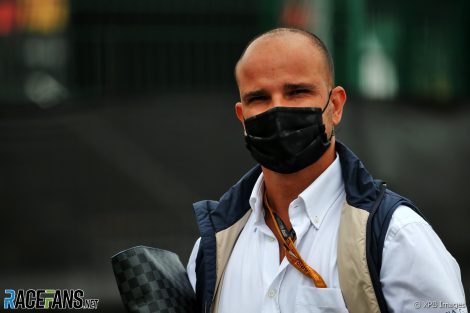
“I’m really proud and happy of what we achieved, but it’s a shame I could not give back a lot more emotion and [success] to my family for the big effort they made to help me achieve what I did. Also to Peter, who was the first person to believe in me and gave everything for me because he was for me a second father.”
In retirement Liuzzi has, though, given the sport his services – by qualifying as a F1 driver steward who will be on duty for his home race at Monza this weekend. Ironically, he was part of the panel that excluded Vettel’s Aston Martin from second place in Hungary for a fuel infringement.
“Luckily the team cannot blame me for designing the fuel system,” he jokes.
My F1 Cars
- Hill on Williams’ dominant cars, Brabham’s last gasp and the “worst decision” F1 ever made
- Herbert on his painful debut, Schumacher’s title-winning Benettons and more
- Villeneuve on Williams’ last title-winner, BMW grief and Alonso’s ‘un-driveable’ Renault
- Coulthard on the CVT Williams, McLaren’s little-known tricks and Newey’s first Red Bulls
- My F1 Cars: Webber’s route from ‘pain in the ass’ Minardi to all-conquering Red Bull




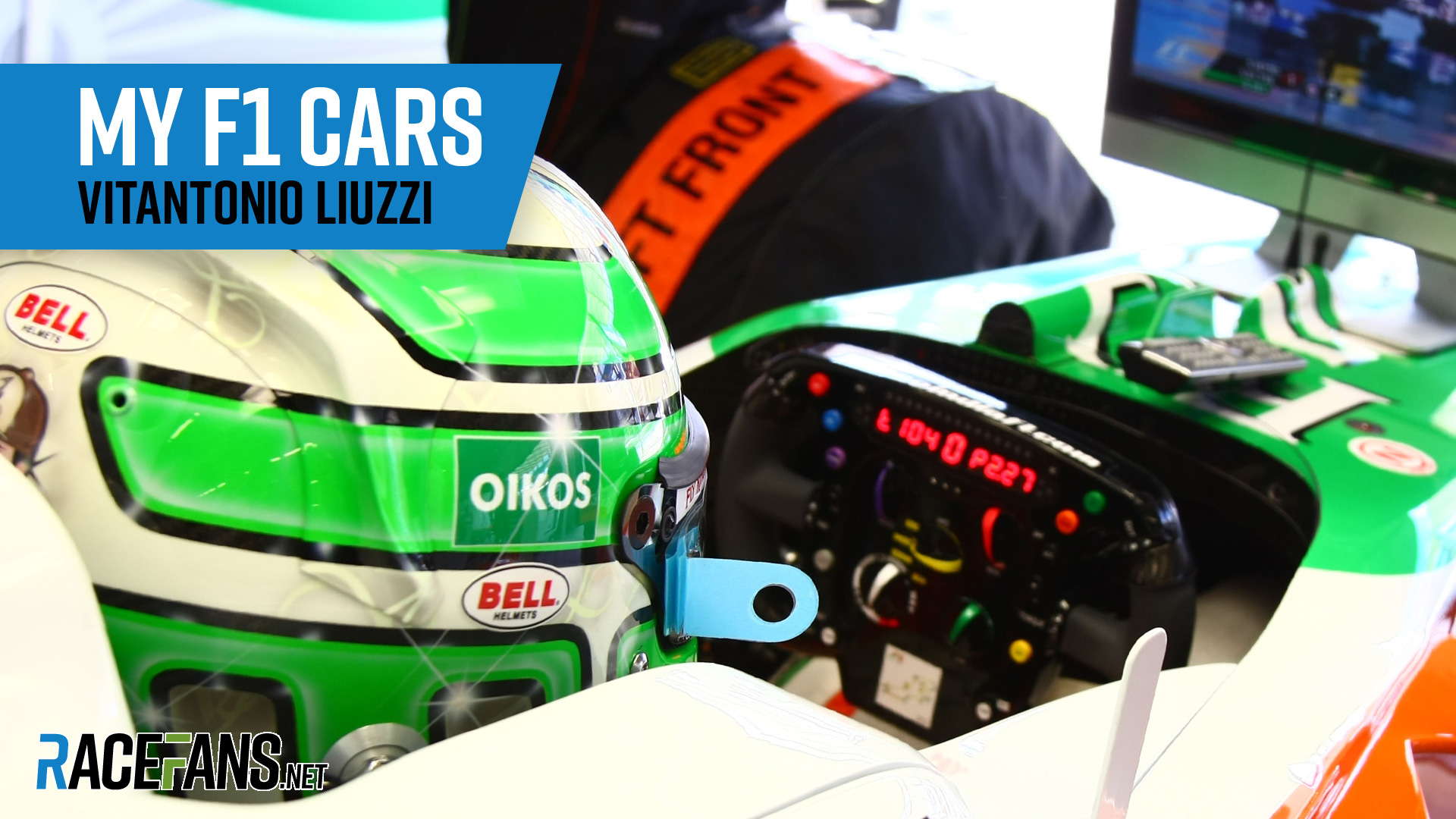
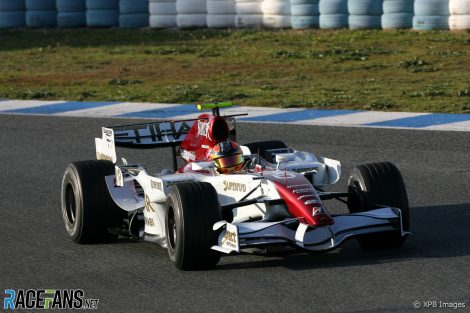
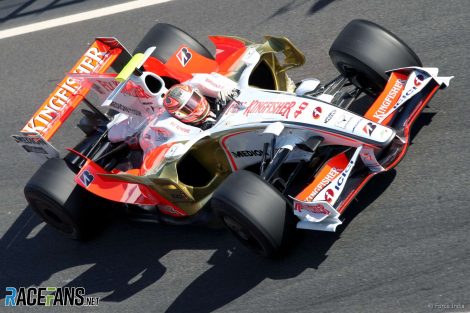
Jere (@jerejj)
8th September 2021, 12:05
The surrounding edge shape is still slightly similar but otherwise dissimilar.
Alan Dove
8th September 2021, 12:40
Slight correction. I think ‘beating Schumacher’ doesn’t correlate really with what happened. It’s true that in the dry Michael was pretty much mid-grid (he qualified 16th. But these are the best karters in the world so that’s pretty decent any way) but in the rain he was very fast. Local knowledge and all that.
In final 1 he span out of 3rd while in front of Luizzi (who was probably taking it easy to get points for the world title) and was classified 25th, and in the second final he was 2rd and Luizzi was classified in 27th
At the end Luizzi came out with 13 points and Schumacher 20. So I think factually speaking ‘beating’ isn’t the right word.
He did him to the world title, because Michael did the alst round of 4. But the actual race weekend, no.
He did beat Hamilton and Rosberg to the title who finished 15th and 16th respectively.
cduk_mugello (@cduk_mugello)
8th September 2021, 13:09
Enjoyed this a lot. This feature is a good addition. It’s like a mini autobiography – you get nice insights but it’s not too lengthy. Perfect!
José Silva
8th September 2021, 13:49
These features are great and is what motorsport journalism and reporting is all about. Many thanks!
Red Andy (@red-andy)
8th September 2021, 14:37
I always learn something new from these features. For example, I never knew that Red Bull abandoned their driver rotation policy at the behest of the drivers themselves.
I always felt Liuzzi was hard done by in that situation – he was a better driver than Klien, but suffered due to being insufficiently Austrian. In some ways that was the story of his F1 career – constantly being overlooked in favour of drivers who weren’t really any better.
BasCB (@bascb)
8th September 2021, 14:59
Yeah, I didn’t know it was their idea to ditch the rotation either @red-andy. I agree with them that it felt like a daft idea from the start though!
rodewulf (@rodewulf)
8th September 2021, 20:30
@red-andy
It’s also the case of Pascal Wehrlein at Sauber (not because of Leclerc, of course, but Ericsson).
José Silva
8th September 2021, 20:34
Indeed, and fortunately it did not become fashion among teams
BasCB (@bascb)
8th September 2021, 14:57
I must say I really dig these in depth interviews with F1 drivers and engineers, thanks Dieter (and Keith) for bringing these great reads with real insight in who these people are and moving moments from their careers in F1.
Makes me appreciate Liuzzi more.
Red Pill (@redpill)
8th September 2021, 19:52
Thanks Dieter Rencken for the article. It was a nice read.
Forrest Gump (@forrestgump)
8th September 2021, 21:07
Gr8 read… I simply had to look up the Jag R5B, wow, 19,000 rpm with a 72* V-10.
Thank you Dieter for a terrific read…
Jay Menon (@jaymenon10)
9th September 2021, 6:03
Thanks for the article Dieter. Brilliant stuff as usual.
Balue (@balue)
9th September 2021, 6:09
A good read. Liuzzi had speed, but maybe lacked confidence. Gracious in his description of previous colleagues.
I have an opinion
9th September 2021, 6:24
And Ricciardo has certainly mentioned in interviews that he feels Liuzzi had been underrated.
Slobo (@slobo)
9th September 2021, 16:05
“The end of 2009 saw Force India switch from Ferrari engines to using complete McLaren back-ends including Mercedes engines.”
They were already running Mercedes engines in 2009
Dave
10th September 2021, 10:58
Liuzzi should design steering wheels. :D